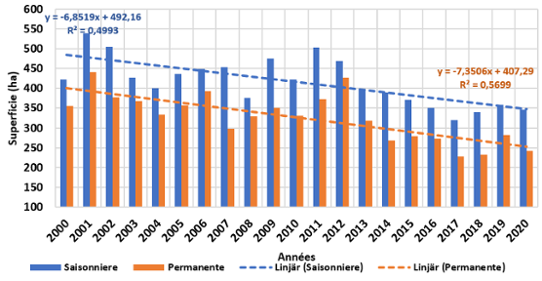Background
Wetlands are diverse and rich environments, with multiple
functions and values that are now widely recognised.
They are essential in order to maintain the good condition
of water resources and biodiversity, and they play a part in
socioeconomic development. They also play a crucial role
in combating the effects of climate change. However, there
is a continuous degradation of these ecosystems and the
ecosystem services they provide. This is the combined
result of climatic and anthropogenic factors.
Burkina Faso, and in particular the Nakanbé-Mané wetland, is one
of the regions that is most affected by the degradation of
ecosystems. Characterised by a continuous decrease in
water surfaces, local residents are concerned that it will
disappear. This degradation particularly affects the resilience
of local populations. In order to promote the sustainable
management of the Nakanbé-Mané wetland and its
functions, a local, integrated, appropriate and participatory
management plan for the site is being developed. The
overall objective of the project was to support advocacy
with decision-makers to encourage the inclusion of a climate
change dimension when developing the integrated
wetland management plan. Specifically, the impact of
climate change on the dynamics of surface water resources
in the Nakanbé-Mané wetland was analysed.
Description
The methodology was based on three main steps:
- Analysing the dynamics of the water surfaces of the Nakanbé-Mané wetland using the Google Earth Engine platform.
- Determining the explanatory climatic factors. Collecting and analysing data on precipitation, temperature and potential evapotranspiration from the Ouagadougou synoptic station during 1991–2020.
- Field visits to meet with the first farmers. The results of the analysis show a clear downward trend in the seasonal and permanent water surfaces of the Nakanbé-Mané basin wetland.
The likely causes of these changes are (i) the long period from 1991 to 2009 – twenty years of intense, persistent droughts, (ii) the concomitant rise in average annual temperatures by 1.5°C and in potential evapotranspiration by 16%, and (iii) the increase in extreme events such as extremely intense rainfall during the period from 1991 to 2020.

Impact
A workshop was held to present the results of the study to
decision-makers (technical services of the Ministry of the
Environment, the local wetland management committee,
etc.) and land and river users (market gardeners, fishermen,
livestock breeders, women, gold washers).
Lessons Learned
Gaining approval and technical and financial support
from superiors is essential. It is also crucial to obtain the
necessary data for the study, and to ensure a participatory,
inclusive working methodology, as climate change issues
need to be addressed in a holistic manner.